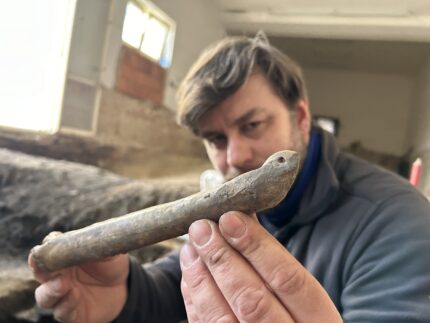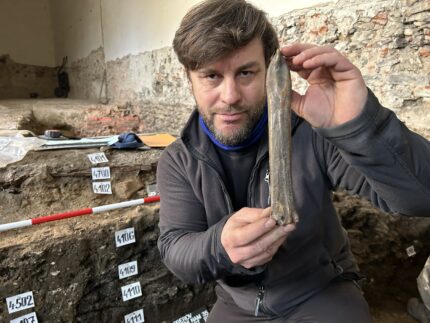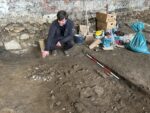
Archaeologists from the Comenius Museum made the discovery during a rescue excavation in the Upper Square of the city. At the time when the skate was made, the Upper Square area was on a hill overlooking the left bank of the Bečva River. There wasn’t a city of Přerov yet, but rather an agglomeration of small settlements dotting the branches of the Bečva. The Upper Square was first a fortified square and then a fortress built by Polish King Boleslav the Brave after his conquest of Moravia in 1003.
Archaeologist Zdeněk Schenk:
“The object has a specific shape. On one side, it is curved into a tip which has a hole drilled in it and there is another hole at the back. They were used to thread a strap through, which was used to attach the skate to a shoe or to a wooden sledge.”

“Rather than skating, they would shuffle along the frozen surface with the help of a stick or two. They would also attach the blades to sledges to carry a load of goods across the frozen water.”

The bone skate will go on display at the Comenius Museum in Přerov Castle.
* This article was originally published here








No comments:
Post a Comment